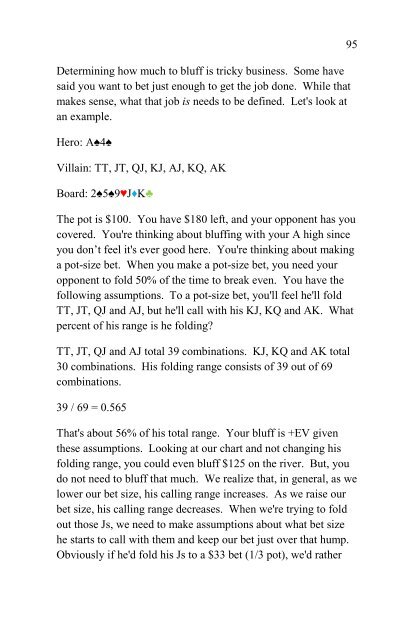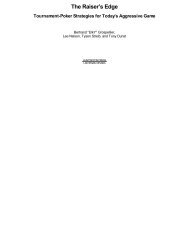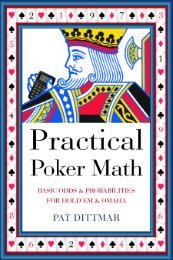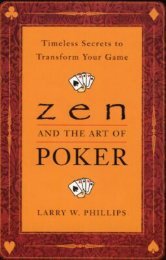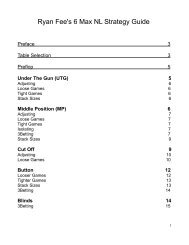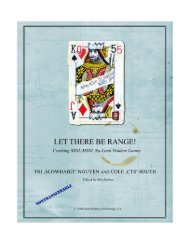Create successful ePaper yourself
Turn your PDF publications into a flip-book with our unique Google optimized e-Paper software.
Determining how much to bluff is tricky business. Some have<br />
said you want to bet just enough to get the job done. While that<br />
makes sense, what that job is needs to be defined. Let's look at<br />
an example.<br />
Hero: A♠4♠<br />
Villain: TT, JT, QJ, KJ, AJ, KQ, AK<br />
Board: 2♠5♠9♥J♦K♣<br />
The pot is $100. You have $180 left, and your opponent has you<br />
covered. You're thinking about bluffing with your A high since<br />
you don’t feel it's ever good here. You're thinking about making<br />
a pot-size bet. When you make a pot-size bet, you need your<br />
opponent to fold 50% of the time to break even. You have the<br />
following assumptions. To a pot-size bet, you'll feel he'll fold<br />
TT, JT, QJ and AJ, but he'll call with his KJ, KQ and AK. What<br />
percent of his range is he folding?<br />
TT, JT, QJ and AJ total 39 combinations. KJ, KQ and AK total<br />
30 combinations. His folding range consists of 39 out of 69<br />
combinations.<br />
39 / 69 = 0.565<br />
95<br />
<strong>That</strong>'s about 56% of his total range. Your bluff is +EV given<br />
these assumptions. Looking at our chart and not changing his<br />
folding range, you could even bluff $125 on the river. But, you<br />
do not need to bluff that much. We realize that, in general, as we<br />
lower our bet size, his calling range increases. As we raise our<br />
bet size, his calling range decreases. When we're trying to fold<br />
out those Js, we need to make assumptions about what bet size<br />
he starts to call with them and keep our bet just over that hump.<br />
Obviously if he'd fold his Js to a $33 bet (1/3 pot), we'd rather


